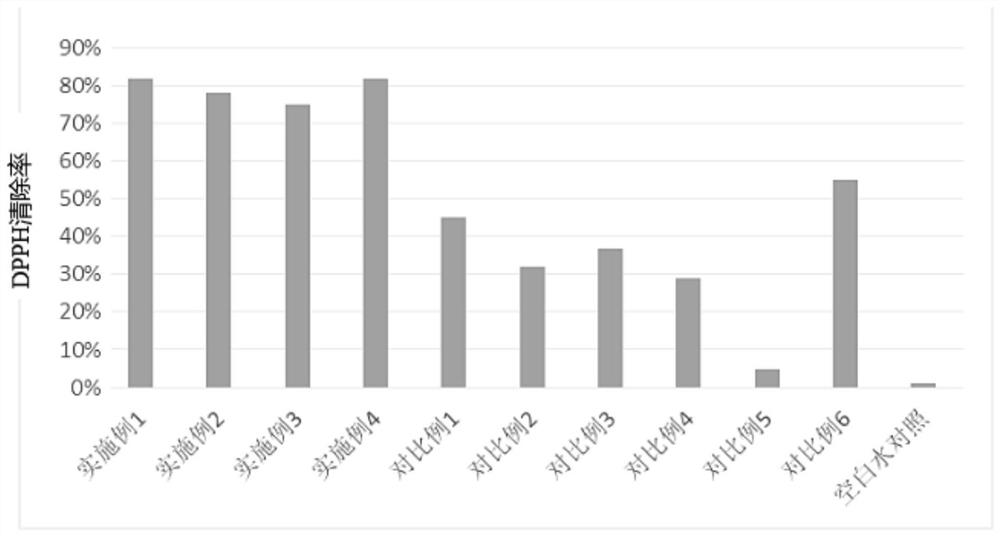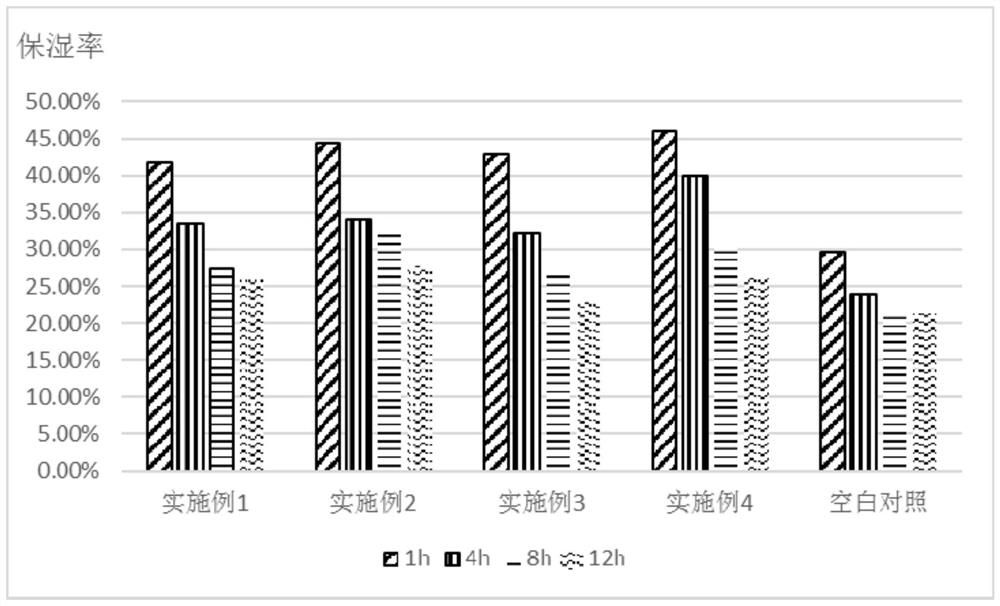An anti-dandruff and itching scalp conditioning liquid and its preparation method and application
A technology of anti-dandruff, anti-itch, and conditioning solution, which is applied in the fields of medical formula, hair care, skin diseases, etc. It can solve the problems of unknown conditioning effect, complex plant ingredients, and poor moisturizing ability, so as to improve the sebum microenvironment and soothe the skin , the effect of promoting absorption
- Summary
- Abstract
- Description
- Claims
- Application Information
AI Technical Summary
Problems solved by technology
Method used
Image
Examples
Embodiment 1-4
[0052] The anti-dandruff and anti-itch scalp conditioning liquid of this embodiment 1-4 is made of the components shown in Table 1 by weight percentage (that is, the numbers in the table represent weight percentages, for example, 30 represents 30%).
[0053] Table 1
[0054]
[0055]
[0056] The preparation method of the anti-dandruff and anti-itch scalp conditioning solution described in any one of the above-mentioned embodiments 1-4 is: mix ethanol, chamomile essential oil, juniper fruit extract, camellia flower extract, and Kanuka leaf extract according to the formula Stir, then add panthenol, xylitol, hexanediol and fragrance, make up water and stir well.
Embodiment 5
[0062] In this embodiment, the scalp conditioning solution of Examples 1-5 and Comparative Examples 1-6 is subjected to Malassezia bacteriostasis test
[0063] This embodiment refers to the Oxford cup method of inhibition zone indicator test recommended by the National Committee for Clinical Standards (NCCLS): under sterile conditions, draw 200 μL of indicator bacteria suspension and spread it evenly on the plate medium; add 0.1 mL dropwise to the Oxford cup. The sample solutions of Examples 1-4 and Comparative Examples 1-6, wherein the indicator bacterium is Malassezia culture based on 37 ° C for 48 hours; remove the Oxford cup, accurately measure the diameter of each inhibition zone with a vernier caliper, and compare Bacteriostatic effect.
[0064] Wherein the experimental strain and the concentration of the bacterial solution obtained from the strain configuration are shown in Table 1. The Malassezia bacteriostasis test was performed on Examples 1-4 and Comparative Exampl...
Embodiment 6
[0069] In this embodiment, the DPPH free radical scavenging test is carried out on the scalp conditioning solutions of Examples 1-4 and Comparative Examples 1-6
[0070] The test principle is: DPPH is a stable organic free radical, and its strongest absorption peak is at 519nm. When this free radical is added to ethanol solution, it will display dark purple. When a certain amount of antioxidant is added, the anti-oxidant can be measured at 519nm. The absorbance value after the oxidizing agent scavenges DPPH and causes the color to lighten. Quantitative analysis is carried out by spectrophotometry to detect free radical scavenging, so as to evaluate the ability of active ingredients with antioxidant effects in products to scavenge free radicals. The larger the scavenging rate, the stronger the ability to scavenge free radicals and antioxidants. The DPPH clearance rate of the blank sample was 0. Obtain the test result of the scavenging ability of scalp conditioning liquid to DP...
PUM
 Login to View More
Login to View More Abstract
Description
Claims
Application Information
 Login to View More
Login to View More - R&D
- Intellectual Property
- Life Sciences
- Materials
- Tech Scout
- Unparalleled Data Quality
- Higher Quality Content
- 60% Fewer Hallucinations
Browse by: Latest US Patents, China's latest patents, Technical Efficacy Thesaurus, Application Domain, Technology Topic, Popular Technical Reports.
© 2025 PatSnap. All rights reserved.Legal|Privacy policy|Modern Slavery Act Transparency Statement|Sitemap|About US| Contact US: help@patsnap.com



